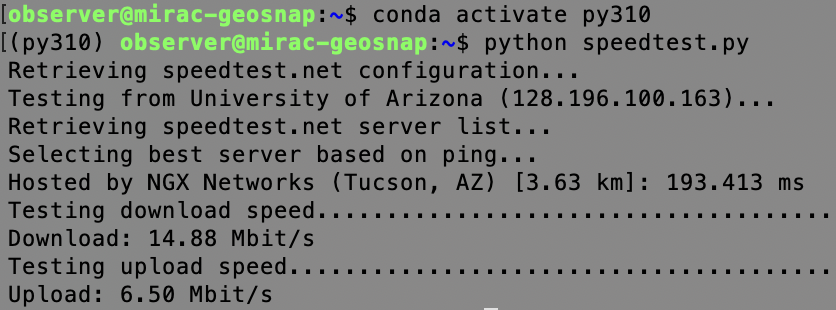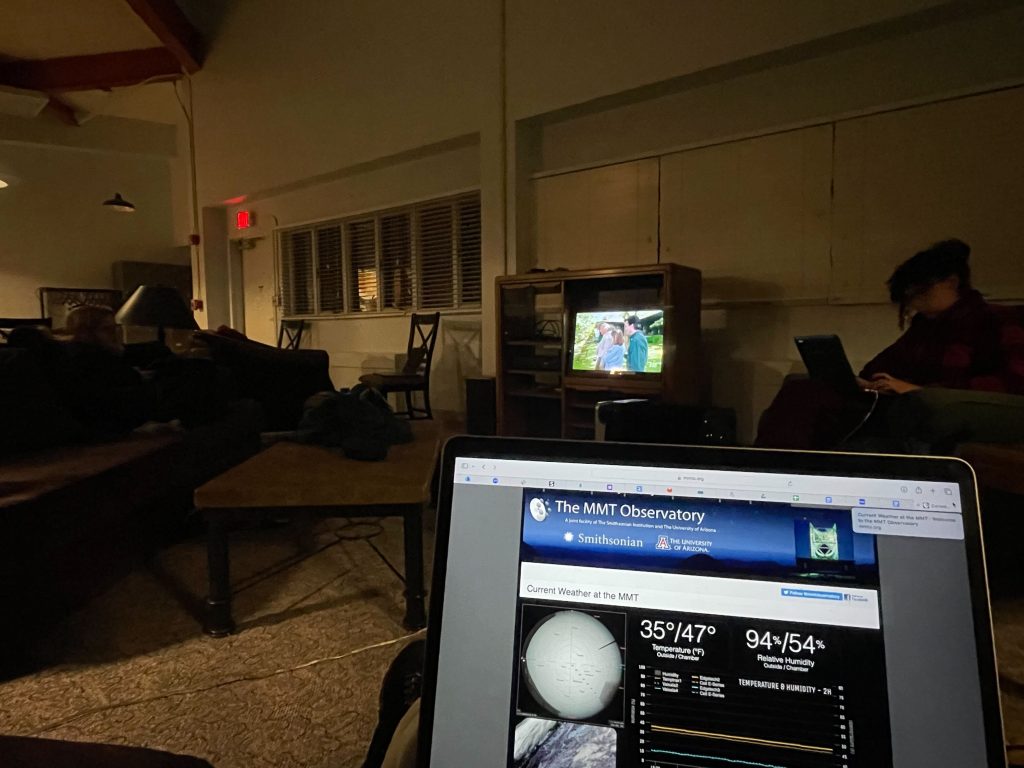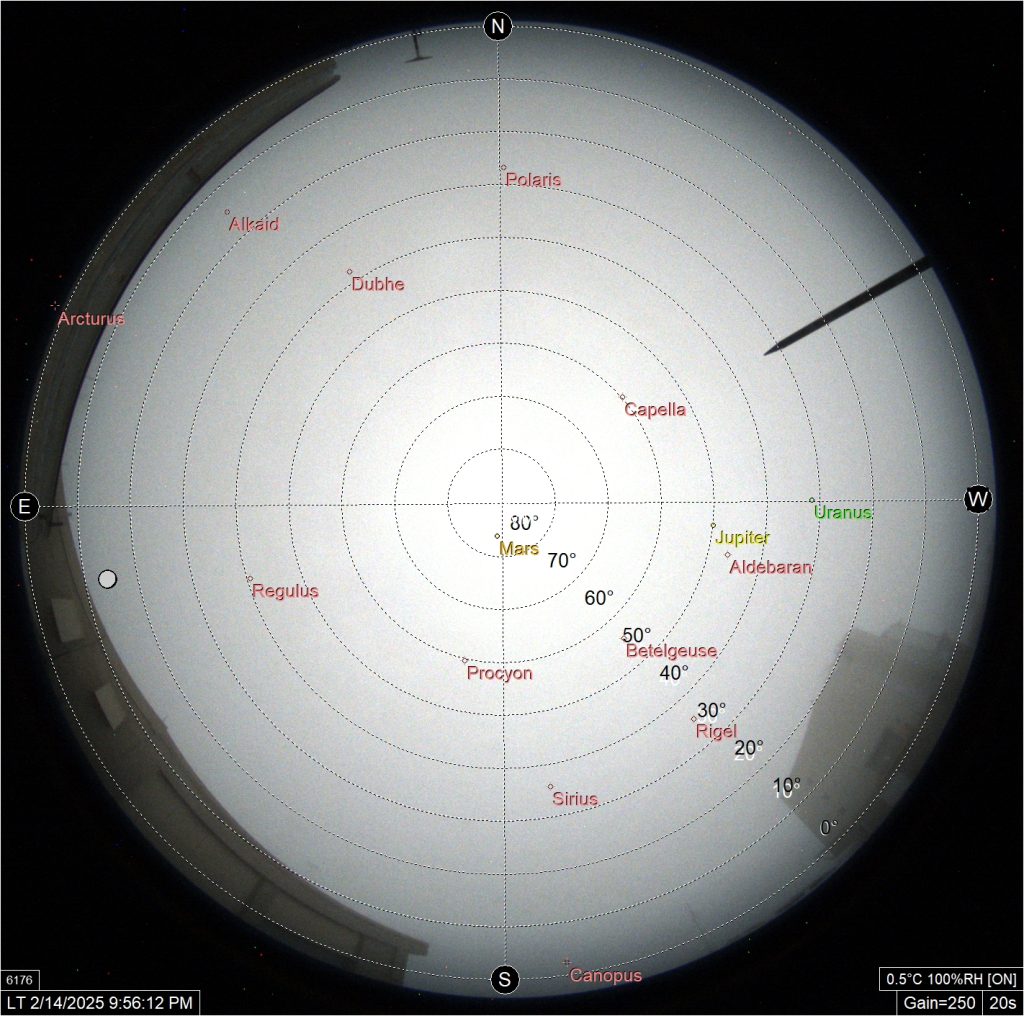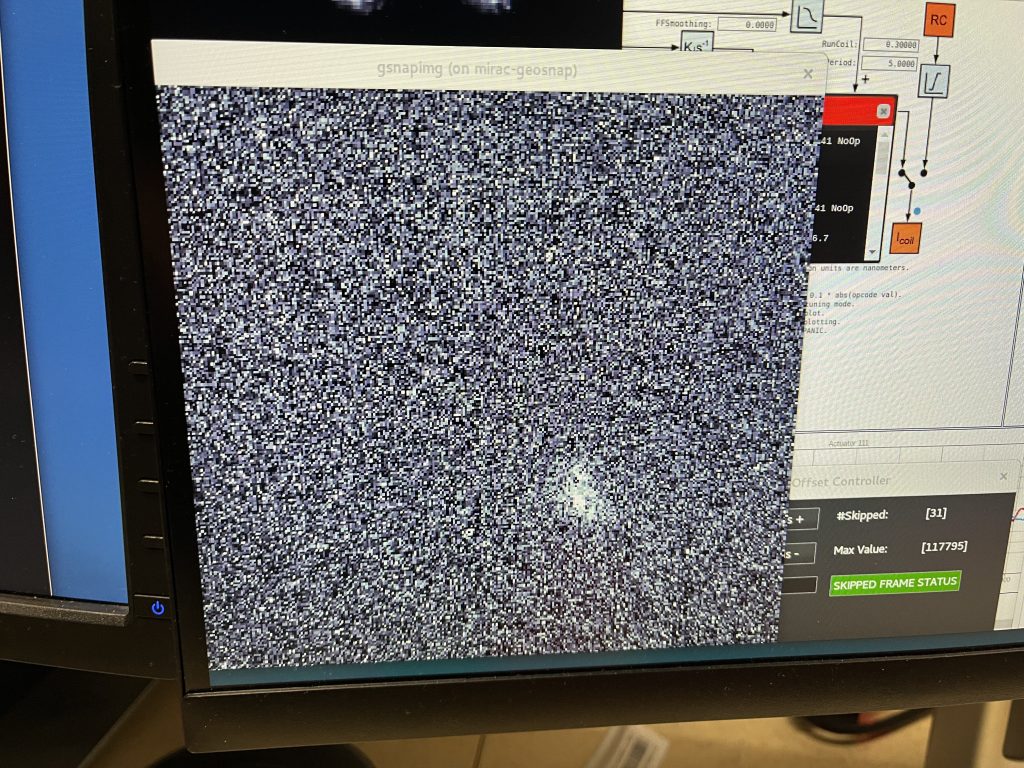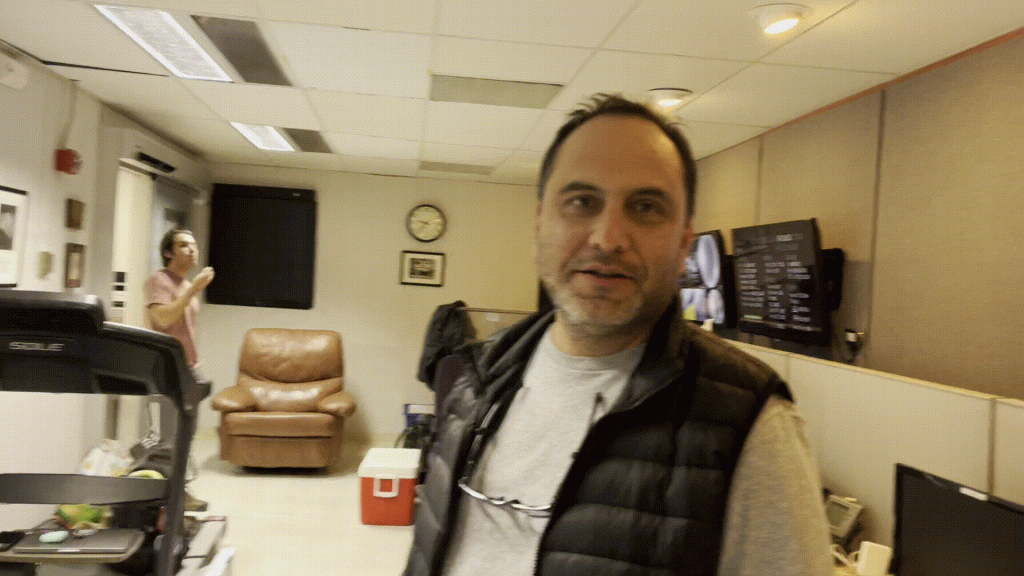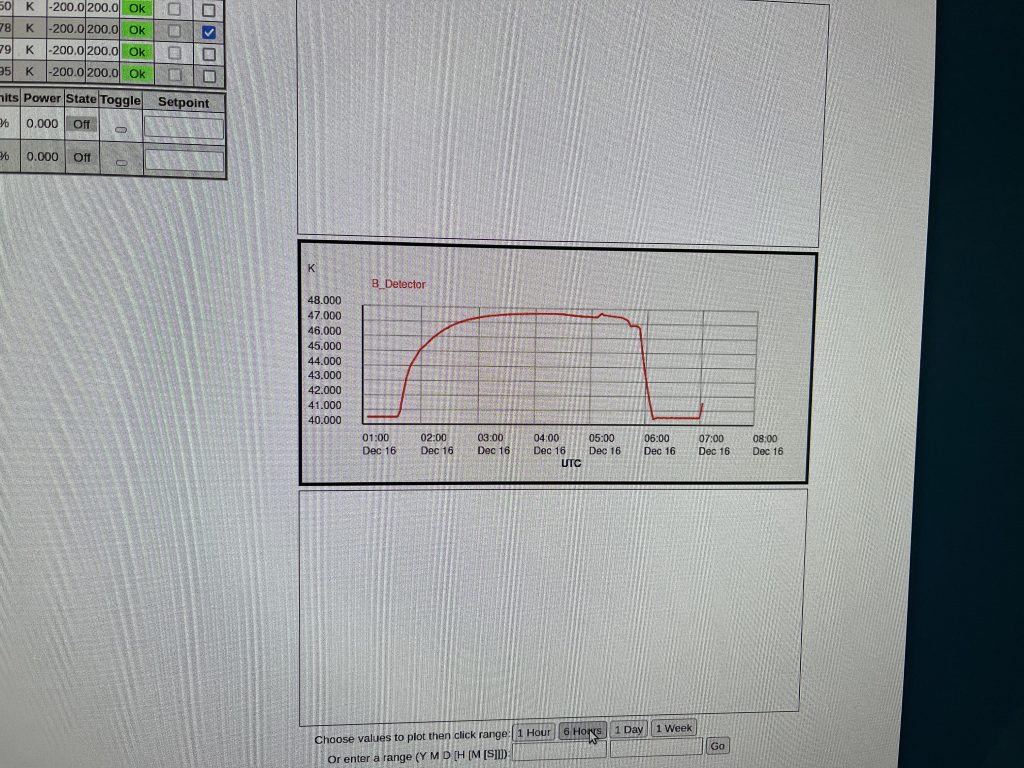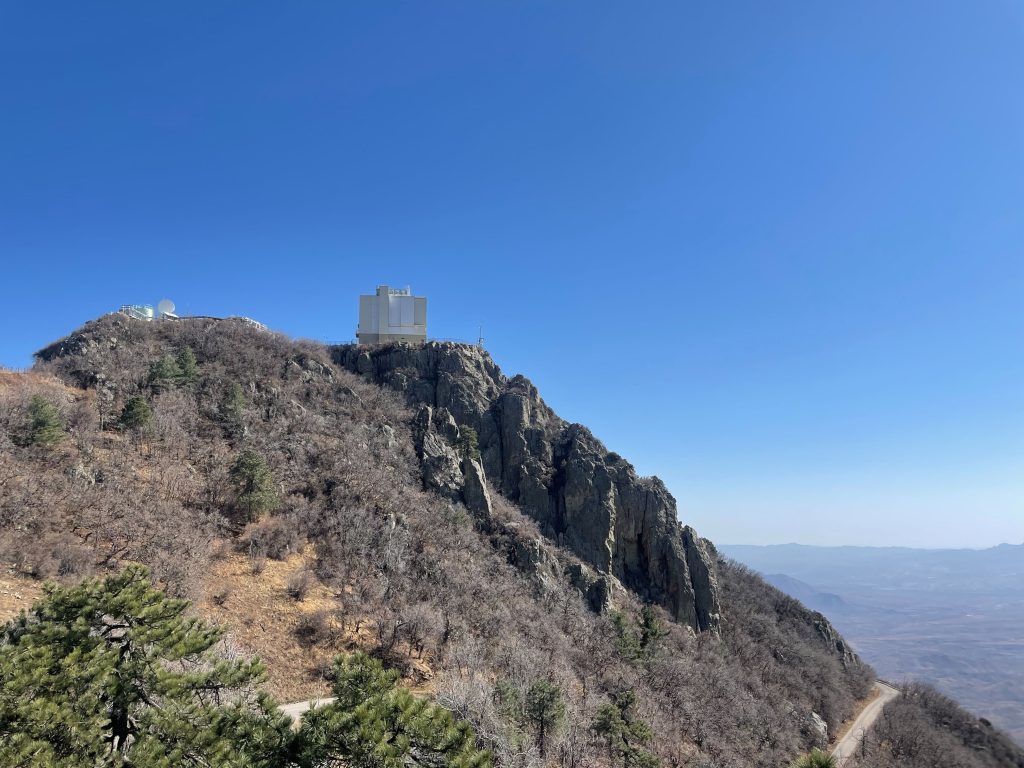
For the first time, Bianca and I are the only AOistas at the AO station for the entirety of a run. After last night’s work, we felt motivated to close the loop. In fact, I would even say we felt confident in our abilities to do so. We began the start of the night CACAO processes while making constant WFS pupil adjustments. Normally our pupils don’t drift this much, so we decided to check the pupil imager. Sure enough, our pupil image was vignetted.
Flashback to last night:
After alignment, we worked on booting up CACAO and acquired an RM. While checking RM modes, we noticed modes were not looking AO ready. They should not have chunks taken out of them. This led us to check the pupil image. We saw the same vignetting we see today.
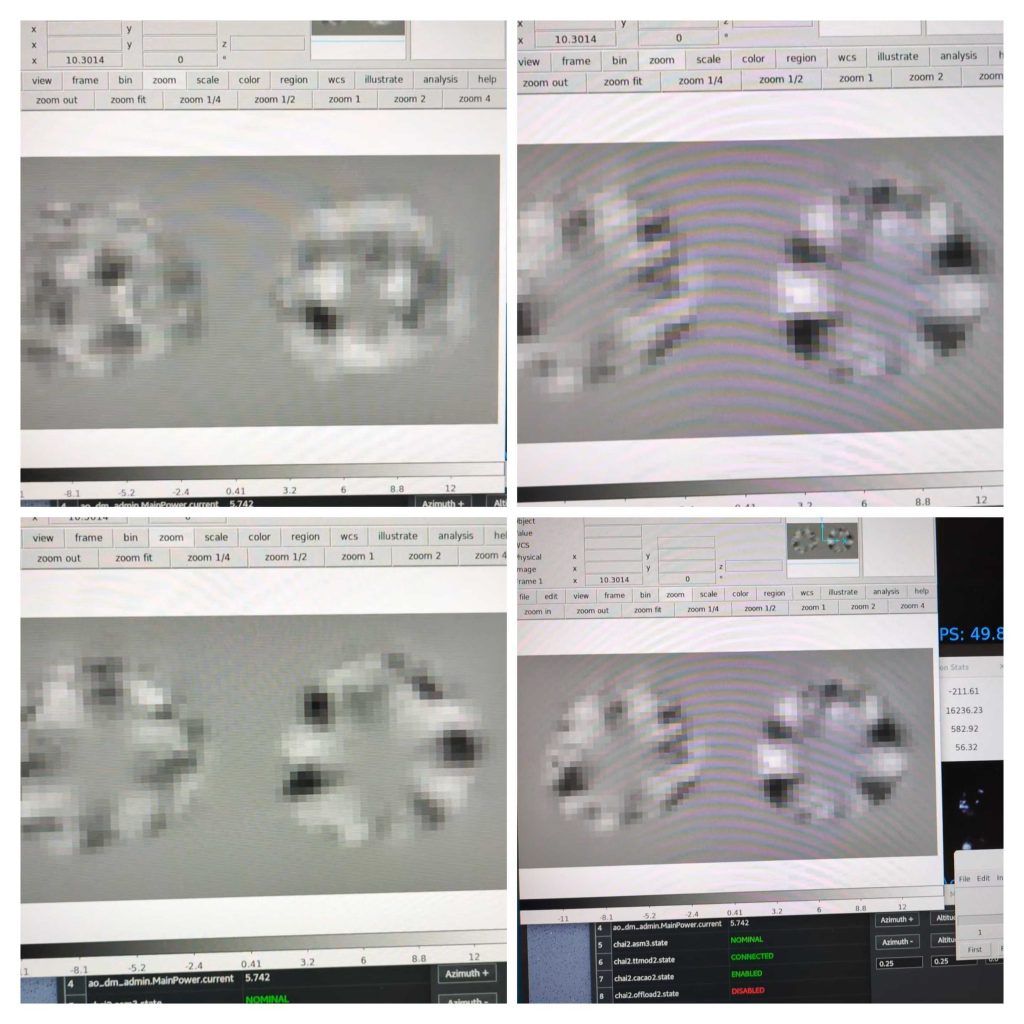
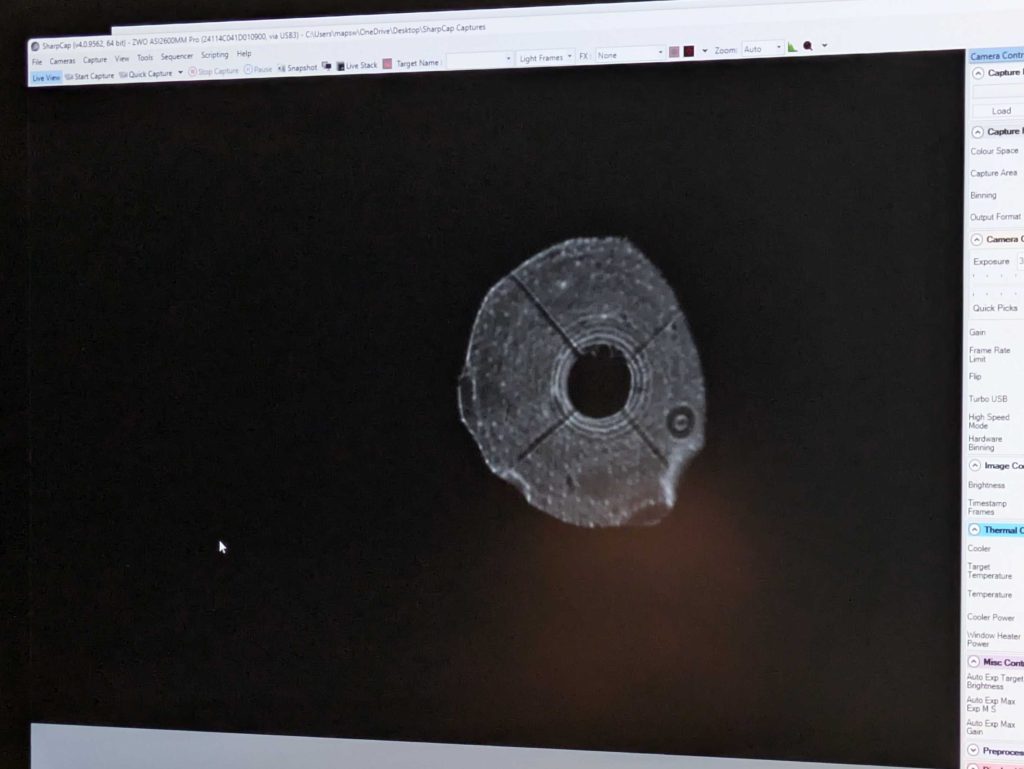
Our solution was to adjust alignment in the periscopes and MIRAC dichroic. With the remaining time in the night, Bianca and I were able to get to the part of the CACAO process where we open up the gains gui that allows us to close the loop. At this point, we did not notice any extreme drifting. Unfortunately, we were receiving errors while trying to open the gui, and sunrise was just around the corner.
Back to present:
Just as last night, Oli and Maggie adjusted the MIRAC dichroic and top-box periscopes. Bianca and I proceed to CACAO, but continue to face the same drifting issue. We now realize this vignetting/drifting issue is very repeatable. Our suspicion is that this is due to MIRAC being off the center of rotation. To test this, we realign to the telescope chief ray to see how AO performs without MIRAC. By the end of the night we are able to close the loop on 20 modes with minimal drifting. This was a bit tricky, as we did not have a PSF to reference as we were closing the loop (MIRAC is very useful for PSF imaging). Unfortunately, we cannot easily determine how good the loop is working purely based on vibes and what we can see from the acquisition camera.
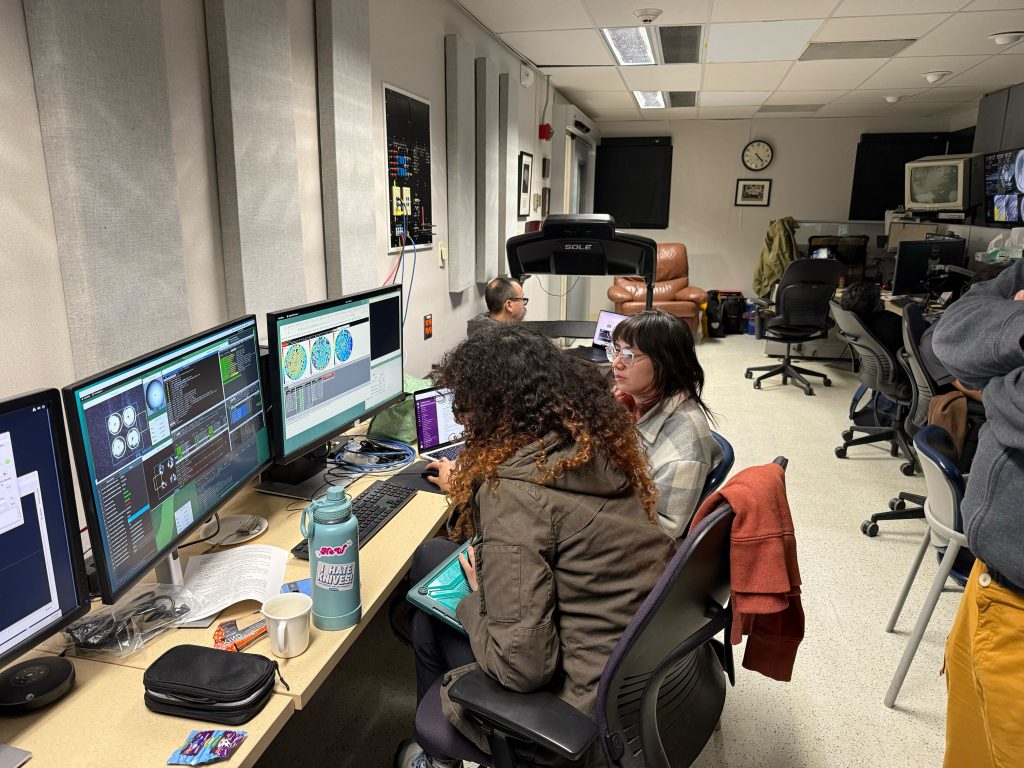
We came to the conclusion that we do not want to proceed using MIRAC this run. Our plan is to hopefully get PISCES installed before tomorrow night so that we can continue with the optimal setup to perform AO. To be continued…
Stay tuned for the next chapter of the MAPS April 2025 run!
The song of the night is “Drift Away” by Uncle Kracker.
